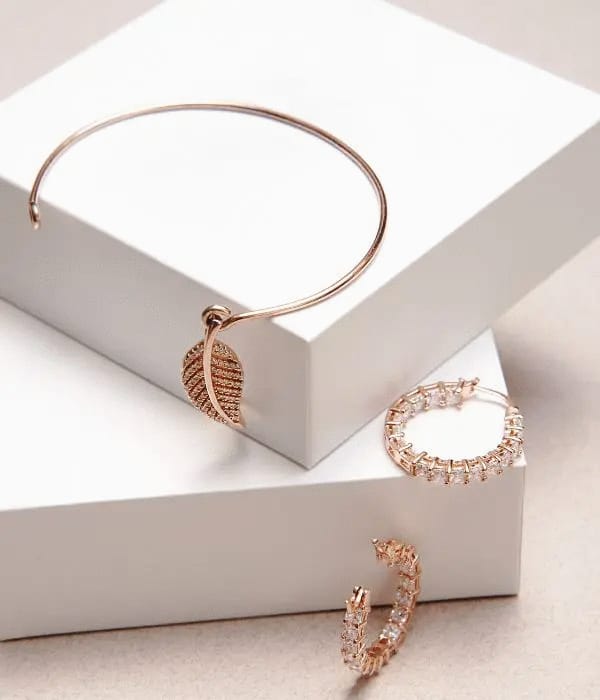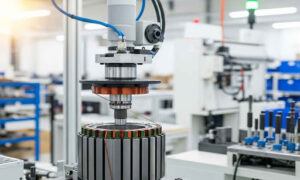Jewelry manufacturing is a complex and fascinating process that combines artistic vision, craftsmanship, and innovative technology. In this blog post, we will delve into the world of custom jewelry manufacturing, highlighting key techniques, the growing importance of sustainability, and the role of technology in the industry. By exploring these aspects, we hope to provide a greater appreciation for the artistry involved in creating one-of-a-kind pieces.
The Techniques: Casting, Fabrication, and 3D Printing
Lost wax casting is a popular technique that dates back thousands of years. It involves creating a wax model of the jewelry piece, encasing it in a mold, and then pouring molten metal into the cavity left by the melted wax. This method is ideal for intricate designs and can produce multiple identical pieces. The process involves several stages, including creating the wax model, investing it in a plaster mold, burning out the wax, and casting the metal. Each stage requires precision and skill, making lost wax casting a highly respected technique in the industry.
Hand fabrication is another time-honored method that requires exceptional skill and precision. Jewelers meticulously cut, shape, and join metal pieces to create unique designs. This technique allows for greater customization but can be labor-intensive and time-consuming. Hand fabrication often involves techniques such as soldering, forging, and wire wrapping, and is highly valued for the craftsmanship and attention to detail it requires. The resulting pieces are often one-of-a-kind, as the individual touch of the artist cannot be replicated.
Metal 3D printing is an innovative technology that enables the creation of complex designs by building layers of metal powder. This method reduces material waste and production time while allowing for the creation of highly detailed pieces. It also enables designers to create designs that were previously impossible or highly challenging to produce using traditional methods. The versatility and precision of metal 3D printing make it an attractive option for custom jewelry manufacturing, especially for intricate and unconventional designs.

Embracing Sustainability in Custom Jewelry Manufacturing
Sustainability has become a crucial aspect of custom jewelry manufacturing. To minimize environmental impact, manufacturers can adopt several eco-friendly practices. For instance, recycling metal is a common approach that helps conserve natural resources. Using recycled metals not only reduces the need for mining but also lowers the energy consumption associated with extracting and processing raw materials. Many jewelry manufacturers now offer pieces made from recycled gold, silver, and other precious metals, contributing to a more sustainable industry.
Energy-efficient equipment, such as LED lighting and solar-powered systems, can significantly reduce a manufacturer’s carbon footprint. By adopting these technologies, jewelry manufacturers can lower their energy consumption and contribute to a more sustainable environment. In addition, the use of biodegradable materials for packaging and eco-friendly cleaning solutions can further minimize the environmental impact of the jewelry manufacturing process.
Ethical sourcing is essential to ensure responsible jewelry production. Custom jewelry manufacturers can adhere to the Kimberley Process Certification Scheme to guarantee conflict-free diamonds. The Kimberley Process is an international certification scheme that aims to prevent the trade of conflict diamonds, promoting transparency and ethical practices in the diamond industry. Similarly, Fairtrade Gold and ethically sourced gemstones are other options that contribute to sustainable and responsible practices. By choosing to work with ethically sourced materials, jewelry manufacturers can support responsible mining practices and contribute to the well-being of mining communities.
The Role of Technology in Custom Jewelry Manufacturing
Technology plays a significant role in the evolution of custom jewelry manufacturing.
Computer-aided design (CAD) software allows designers to create intricate and precise digital models of their designs, streamlining the production process and reducing the likelihood of errors. CAD also enables designers to make adjustments and modifications more easily, ensuring that the final product meets the client’s expectations.
In addition to CAD, computer-aided manufacturing (CAM) technologies, such as CNC milling machines and laser cutting systems, have revolutionized the jewelry manufacturing process. These machines can precisely shape and cut materials with minimal waste, resulting in more efficient production and greater accuracy in the final product. Moreover, CAM technologies allow manufacturers to produce intricate designs and patterns that were previously unattainable through traditional methods.
The internet and e-commerce platforms have also had a significant impact on the custom jewelry manufacturing industry. Online marketplaces and digital communication tools enable manufacturers to connect with clients and showcase their work to a global audience. This increased visibility has led to greater demand for custom jewelry and has opened up new opportunities for manufacturers to expand their reach and grow their businesses.
Future Trends in Custom Jewelry Manufacturing
As the custom jewelry manufacturing industry continues to evolve, new trends are emerging that will shape its future. One such trend is the increased use of lab-grown diamonds and gemstones. Lab-grown diamonds have the same physical, chemical, and optical properties as mined diamonds but are produced in a controlled environment using advanced technology. As the production of lab-grown diamonds becomes more efficient and cost-effective, their use in custom jewelry manufacturing is expected to grow. Similarly, lab-grown gemstones, such as sapphires, rubies, and emeralds, offer an ethical and sustainable alternative to mined stones.
Another trend gaining traction is the incorporation of smart technology and wearable devices into jewelry designs. As consumers become more tech-savvy, there is a growing demand for jewelry pieces that integrate functionality with aesthetics. Custom jewelry manufacturers can capitalize on this trend by creating innovative designs that incorporate smart features, such as fitness tracking or notifications, while maintaining the beauty and craftsmanship associated with high-quality jewelry.
Conclusion
In conclusion, the art of custom jewelry manufacturing involves a captivating blend of artistry, craftsmanship, and technology. The various techniques, such as lost wax casting, hand fabrication, and metal 3D printing, cater to different design preferences and production needs. Embracing sustainability through eco-friendly practices and ethical sourcing reflects the industry’s commitment to responsible production. The role of technology, from CAD and CAM to e-commerce platforms, has significantly shaped the industry, and emerging trends, such as lab-grown diamonds and smart jewelry, will continue to drive its evolution. By understanding these elements, we can truly appreciate the beauty, value, and uniqueness of custom jewelry.



































